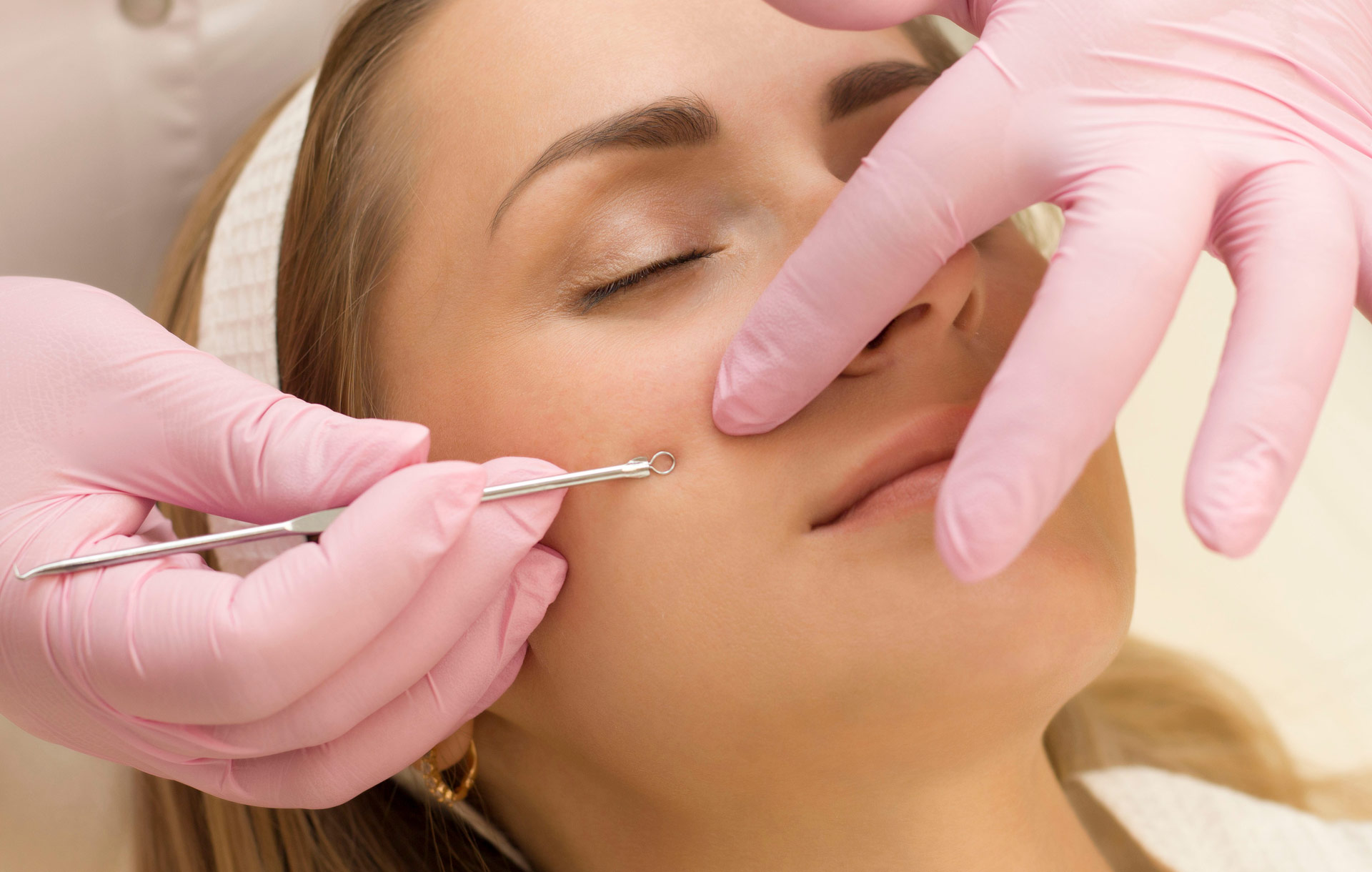
How to properly use these tools in the treatment room
Beyond effective products, there is a core selection of acne treatment tools that are extremely beneficial, and often necessary to the clearing process. Like any tool, specific guidelines should be followed to ensure success and to avoid harming the skin. Let’s take a thorough look at three essential acne tools and how to properly use them.
Comedone Extractors
After exfoliating your client’s skin with an enzyme or chemical peel, it’s time to perform some extractions. Extractions help accelerate the clearing and healing process for acne clients by safely clearing debris from the pore. The first method of extracting is with a comedone extractor. Coming in all shapes and sizes, comedone extractors can be extremely helpful when extracting open and closed comedones.
Though helpful, an acute level of care and caution must be taken when using this too. For instance, do not attempt to extract a noninflamed lesion where inflamed lesions are closely present because it can risk damaging inflamed areas. Do not use comedone extractors on thin, compromised skin as it can cut or bruise the skin.
When using a comedone extractor, apply pressure carefully. If the lesion does not easily budge, move on, and come back to it later. If it still does not extract when you come back to it, stop attempting an extraction. Instead, spot treat the lesion with an anti-inflammatory keratolytic such as sulfur. If you feel uneasy using a comedone extractor, two cotton tip applicators can be used instead. This method will work for both inflamed and noninflamed acne.
“Do not use comedone extractors on thin, compromised skin as it can cut or bruise the skin.”
[ihc-hide-content ihc_mb_type=”show” ihc_mb_who=”2,4,5,6,7″ ihc_mb_template=”3″ ]
High Frequency
Following extractions, you will need to calm inflammation and reduce the presence of bacteria. High Frequency is an excellent way to achieve multiple benefits at once—High Frequency is an oxygenating treatment that is antibacterial, anti-inflammatory, increases blood circulation, and improves overall skin texture. It’s best to place a single layer of gauze over the skin before applying the electrode to keep everything as hygienic as possible.
A High-Frequency wand is a tool that every esthetician should have in their modality arsenal. Not just beneficial for acne clients, it’s a quick and easy add-on for all clientele. There are a few contraindications with High Frequency, however. High Frequency is not safe for clients who are pregnant, experience epilepsy or have metal implants in the body like a pacemaker. Always make sure to check with your client if any of those conditions apply to them before proceeding with High Frequency.
LED Light Therapy
LED light therapy is another great multitasking follow-up to extractions and is typically a treatment upgrade for which estheticians can charge an extra fee. Red and blue LED are an ideal combination for acne-prone skin. While red LED has anti-inflammatory and healing properties, experts have stated that blue LED reduces activity in sebaceous glands. This reduction in activity causes the glands to produce less oil, which may improve acne symptoms. Blue LED is also believed to kill an inflammation-inducing bacterium associated with acne.
Like High Frequency, everyone can benefit from LED Light Therapy—especially Red LED. Red LED is known to improve scarring and signs of aging by improving collagen production which plays a major role in skin healing. Pro panels are available for use in the treatment room as are handheld devices. Handhelds are a great retail opportunity to either resell or rent out to clients to aid in the clearing process. There is little to no downside or risk associated with LED Light Therapy.
Now that you know the ultimate do’s and don’ts of essential acne tools, get ready to tackle all client scenarios with confidence.
[/ihc-hide-content]












